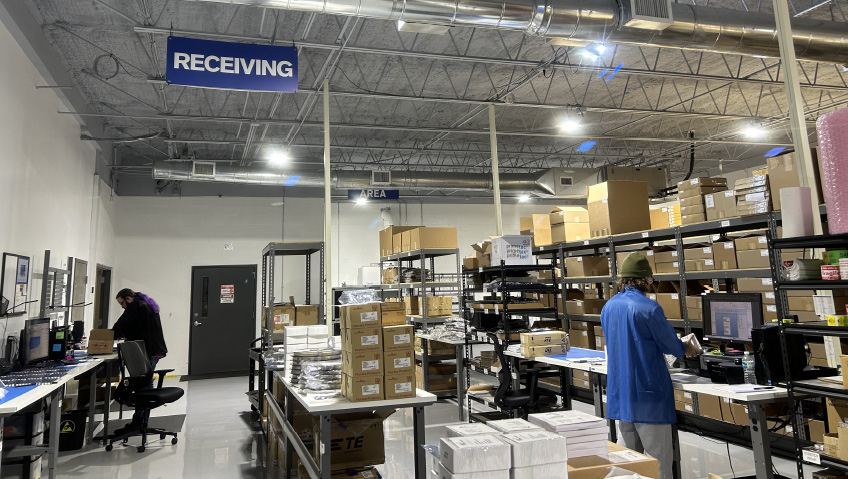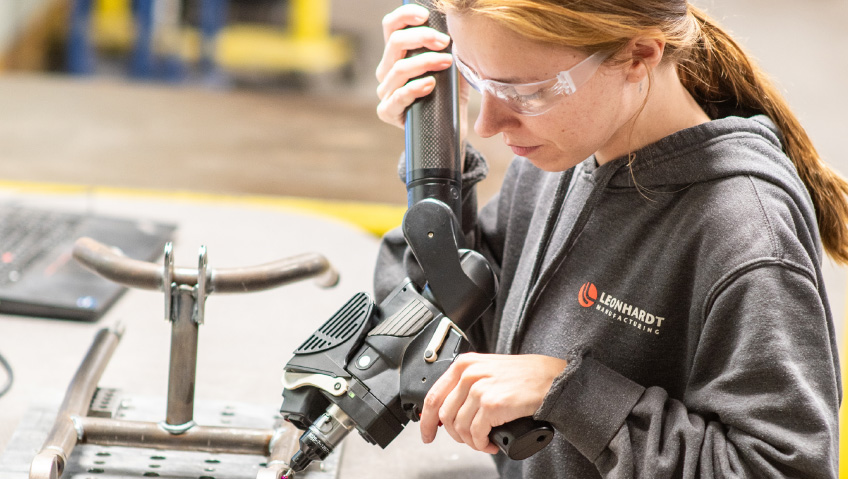It’s a given that women are the backbone of the home, but the role they’ve played in the economy and the success of manufacturing is often understated and rarely recognized. Throughout history, women have, a number of times, been the saving of the sector, which is once again becoming a possibility with the transition to Industry 4.0.
A brief history of women in manufacturing
Originally from the Latin words for hand and make, the term ‘manufacture’ clearly stands for one of the most enabling activities of our modern society. And if you think about it, women are the original manufacturers: they give birth to and raise the next generation of workers. From housework to handicrafts and cottage industries like weaving, women have long produced value inside and outside of the home.
Although manufacturing has always been male-dominated, women have worked in these settings since the first industrial revolution, when steam and water were first used to mechanize previously manual activities, upping productivity and output. With these new powers, a “man’s work” could be done with greater ease (and less sheer muscularity). This was the first instance of technology being the great equalizer between men and women.
This change coincided with another: the presence of women operating machines in the factory setting. However, this participation in the job market depended on a woman’s race, class, age, and marital status.
It should be noted that while this period saw white women entering both schoolhouses and factories in greater numbers, women of colour were still enslaved. And, despite their newfound “freedom” to work, women in factories laboured for a fraction of the wage of their male counterparts and lived in boarding houses to protect their virtue.
It wasn’t long before these women were speaking out about the confines of their situations—the long hours, the strict conditions, and the low wages. They organized protests and the first female labour movement was born.
Standing up, speaking out
In the 1830s, female factory workers in Boston formed the Lowell Factory Girls Association and the Lowell Female Labor Reform Association to collectively protest women’s new challenges in the factory. From Boston to Dagenham and everywhere in between, this would kickstart what would become a century and more of women organizing for their rights.
Another major event with a resounding impact on the 20th century was the invention of electricity, which made factories productive for longer each day, no longer limited by the available light of day. The ‘division of labour’ also came about, which redefined gender roles and how the factory operated.
Factory work and dirty, hard jobs were viewed as a man’s work, with women increasingly filtering into teaching, nursing, and other caretaking industries that became feminized. Progress was steady but slow. In the early 20th century, only 20 percent of women worked outside the home in what was defined as “gainful” employment. Of course, that ignored work done inside the home such as housework and childrearing, work in a family business, and side businesses like childcare operations, catering, farming, and other cottage industries. And so things continued until the war.
The First World War turned everything on its head. While men were conscripted to fight, women not only continued with their household and childcare responsibilities, but also joined the war effort, both as soldiers and as manufacturing employees, once again for a fraction of the pay of their male counterparts.
Women stepped in to keep the economy going, powering the war industry at home. This work was invaluable, but again, only temporary. As war came to an end and soldiers returned home, they would reassume their positions in industry and women were expected to move aside and return to their pre-war status quo.
The power of education
The post-war boom saw the introduction of the Fordist period which was defined by the advent of mass production, the assembly line, and the standard working day. This also saw the rise of the homemaker (but again, only for the classes that could afford to live on one salary). Despite this trend, there was also a marked rise in the number of women becoming educated.
While some women had this opportunity (mostly those in the higher socio-economic echelons), those with limited education could be found in factories and labouring jobs. There was also an increase in women entering the new clerical field, but this was innately connected to a woman’s marital status. In 1930, 50 percent of single women were employed in the U.S. labour force versus only 12 percent of married women. Women were increasingly taking up careers but were still likely to stay at home once married.
However, with the advent of World War Two, the economy once again turned to women to fill in for their conscripted male counterparts. Well-known campaigns like Rosie the Riveter and other wartime propaganda called on women to step up to the war effort at home. Women like my grandmother who shovelled coal at the steel plant in my hometown for $0.65 an hour, (which was good money in those days, even if it was a fraction of their male counterparts’ pay) once again proved that they could be productive workers and mothers and caretakers at the same time.
A period of empowerment
There was no denying the role women played in the war efforts and the strength of the economy, and as a result of increased access to education, and to improving technology and automation, more women were joining the workforce—and staying—than ever before.
Between 1930 and 1970, 50 percent of single women were still employed but the number of married women in the workplace jumped to 40 percent. This was due in part to changes taking place in society at the time. Women were asserting their self-worth and were increasingly proving their value at a student level, and as workers and people. They were more than just a bundle of maternal instincts and a capacity for reproduction. Some women were choosing not to have children at all thanks to the expansion of birth control options.
This enabled more educational and career freedom. While some women aspired to be doctors, and lawyers, and move into other professions they were previously excluded from, other women remained in factory settings. Women already knew they could do anything, but now they were increasingly “allowed” to.
To the glass ceiling
In the 1990s, 74 percent of women aged 25 to 54 were employed versus 93 percent of men. However, participation peaked in the late 1990s at 76 percent for women. More women were employed than ever before, but that didn’t mean they were advancing in their careers relative to their male counterparts. The glass ceiling was real.
Leadership is still male-dominated. For every 100 men who get promoted, only 86 women will, and in 2021, only eight percent of CEOs of Fortune 500 companies were women, although that was the highest ever. The percentage is even lower for people of colour which goes to show that more needs to be done to improve diversity, equity, and inclusion across industries.
Women still face countless challenges in the workplace including unequal pay, gender bias, discrimination, harassment, security fears, a lack of support, insufficient leave or childcare options, and as a result, a more difficult time achieving a positive work-life balance. This is compounded for women of colour.
These barriers are not only preventing women’s full participation in the economy but also standing in the way of optimal productivity and profitability. At a time when skilled and unskilled labour is in high demand, these labour pools should be tapped so that women can step up and save the day once again.
Industry 4.0 and counting
Industry 4.0 poses a unique opportunity for manufacturing. Electronics, information technology, and automation started taking shape in the late 1960s, but industry 4.0 has advanced manufacturing to new heights, enabling greater achievements than ever before. Unfortunately, due to talent shortages spurred by attrition and the need for new skill sets, the full potential of industry 4.0 has yet to be realized.
Currently, there are over half-a-million manufacturing jobs vacant in the United States, a figure that is expected to reach 2.1 million by 2030, with approximately 80 percent of manufacturers struggling to fill their ranks.
It’s high time that manufacturers once again looked into the numbers of women and other underrepresented demographics in the industry. And with regard to ensuring optimal productivity, research shows conclusively that a more diverse team can improve rates of innovation, sound decision-making, and problem-solving capabilities. Diverse companies enjoy a two-and-a-half-times higher cash flow per employee, and revenue can grow by up to 20 percent more than industry median financial returns. Hiring women and people of colour can have resounding impacts on a company’s bottom line, although this shouldn’t be a surprise.
There have been countless moments where women have bolstered the strength of the manufacturing sector throughout history, usually when it is needed the most. If history has taught us anything, it is that when the power of women is leveraged, it can result in a stronger home, community, workplace—and bottom line.






